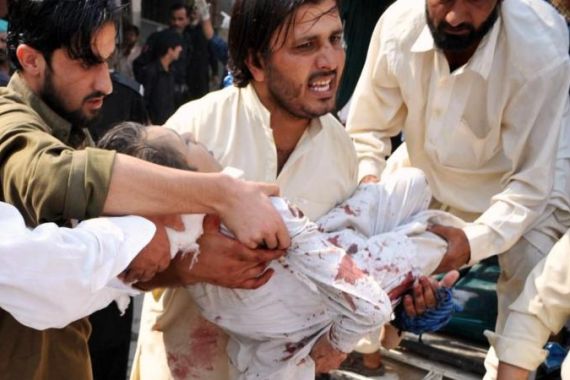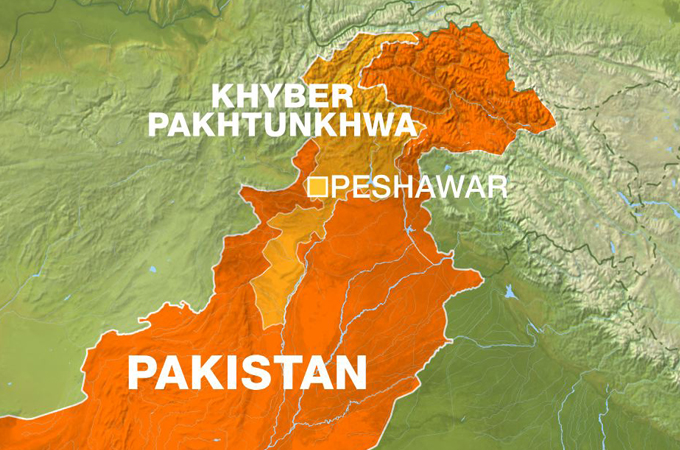Khyber-Pakhtunkhwa: Surprises in the offing?
Wracked by violence and ineffective governance, Pakistan’s northwest could well throw up an electoral surprise or two.

If you’re looking for surprises, the place to keep an eye on will be the troubled north-western province of Khyber-Pakhtunkhwa (KPK).
Analysts’ predictions for the province range from suggesting the Jamaat-e-Ulema Islam-Fazl (JUI-F) will dominate the provincial assembly, to those saying that Imran Khan’s Pakistan Tehreek-e-Insaf (PTI) will be in pole position, with yet others predicting that the incumbent Awami National Party (ANP) will lose ground but still manage to be represented in a coalition government.
Parties to watch
The JUI-F is a religious political party with strong support in the southern part of the province. After suffering defeat in the 2008 elections, it has now reinvented itself as a peacemaker among a war-weary populace, touting its ability to reach out to various factions of the Tehreek-e-Taliban Pakistan (TTP). As a result, the party has shown a resurgence in the past year, attracting support from across the province.
 |
The Awami National Party (ANP), the incumbent in the provincial government, is a secular Pashtun nationalist party led by Asfandyar Wali Khan, and gets its support mainly from the central Peshawar valley districts. It has been criticised for having spent its time in government ineffectively and also accused of corruption, but the party’s main threat is not from electoral rivals: over the past five years, the ANP has been the target of a sustained campaign by the TTP and other groups, reportedly losing more than 750 workers and leaders to the Taliban’s bullets.
Under this threat, the party formerly known for advocating autonomy and ethnic Pashtun rights within Pakistan has changed its election slogan from “My land, my decisions” [Khpala khawra, khpala ikhtyar] to the more morbid “My homeland or the shroud” [Kafan ya watan].
Support for the Pakistan People’s Party (PPP), the ruling party in Islamabad, overlaps with the ANP’s, but the PPP has the added comfort of a large vote bank across the entire province. Despite this support base, the party has been plagued by factionalism over the past five years, and a loss of influence of the provincial leadership with the rest of the party. Similar to the ANP, the PPP has also been paralysed by threats from religious anti-state armed groups and has been struggling to launch a successful campaign in Khyber-Pakhtunkhwa.
The fourth major party in the province is the Pakistan Muslim League-Nawaz (PML-N), which has traditionally had support from the predominantly non-Pashtun Hazara belt. The party has benefitted from the addition of the wealthy Amir Muqam, a former lieutenant of ex-military dictator Pervez Musharraf, who has provided the party with much needed support in the northern Pashtun belt. The party as a whole has sidestepped the issue of militancy in its election campaign, focusing more on governance issues.
Finally, there is the election wildcard: Imran Khan’s Pakistan Tehreek-e-Insaf (PTI). Running on an “anti-status quo” platform, the party has consistently performed well in opinion surveys, and draws support mostly from the Peshawar valley and Hazara division. The actual electoral capabilities of the party, however, remain untested, and will only become apparent on election day.
Other, smaller parties such as the Jamaat-e-Islami, the Qaumi Watan Party and others have had limited campaigns in specific areas, but could still end up as power brokers in any post-election coalition.
Voting trends
To understand the dynamics of voting in Khyber-Pakhtunkhwa, one has to keep three key events in mind. In 1970, voters in KPK bucked the national trend of voting for Zulfiqar Ali Bhutto’s PPP by backing the PML-Qayyum, relegating Bhutto’s party to a distant fourth place. This splitting of the vote has been a persistent theme in the elections since then, with voters given a wide variety of options at the polls.
It has meant that the party votes on different lines and that voters have a wide variety of voting options.
The second key event was the 1985 party-less elections held under the military dictatorship of General Zia-ul-Haq, which saw the introduction of independent candidates and smaller parties making inroads into the parliament. These candidates would poll between highs of 32 percent (1990) to a low of nearly 19 percent (2002) of the overall votes polled in the province.
The final moment of electoral significance was the 2002 elections, which saw the religious political parties sweep into power in the province – a first for such parties, and an indicator that they had made the transition to being seen as legitimate mainstream alternatives.
These three factors – a splitting of the vote, the viability of independents and smaller party candidates and the emergence of religious political parties – have meant that every provincial government formed since 1970 in Khyber-Pakhtunkhwa has either been a coalition government, or heavily dependent on independent representatives’ support.
It is this capacity for the vote to work out in varying ways, depending on post-electoral alliances, that means that there have been no consistent electoral winners at the national level from Pakistan’s troubled Khyber-Pakhtunkhwa.
The writer is the founder of the website Qissa Khwani and tweets under @qissakhwani.